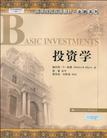投资学
出版时间:2007-6 出版社:中国人民大学出版社 作者:梅奥 页数:481 字数:895000
Tag标签:无
前言
本书作为投资学的入门教材,减少了投资学中烦琐的数理知识与公式推导,但并没有忽视现代投资理论与实践的纷繁性与多样性。在保持结构完整、内容浅显易懂的前提下,详细介绍了各种资本市场投资工具以及这些工具在实际中的应用,突出了国际化的内容;深入浅出地讲解了有关投资的基础理论,让学生对于投资学这门理论性很强的课程有一些感性认识。 本书从实用性出发。着重介绍了从投资者角度如何构建自己的投资组合及对市场环境作出判断,并让学生了解现代金融在美国的发展现状。虽然有些政策法规在我国并不适用,有些金融产品在我国也尚未推出,但这些内容对于开阔学生视野是具有一定帮助的。 本书既可以作为高等学校管理学院、商学院以及财经学院的高年级本科生讲授《投资学》课程的教科书或教学参考书,也可以作为证券分析人员、监管部门与其他证券从业人员学习、参考的书籍,还可以供有一定基础与兴趣的读者用来自修。 由于译者的专业和英语水平有限。疏漏之处在所难免,希望各位读者不吝指正。
内容概要
《投资学》是一本简明的投资学基础教程,它以通俗简洁的语言系统阐述了投资学的基本知识与理论。全书共十五章,分为三个部分:第一部分介绍的是基本的投资原理,以及个人作出投资决策时所面对的市场环境。第二部分列举了各种资本市场中的投资工具,包括股票、公司债券、政府债券,并给出了这些固定收益证券的估值方法;特别介绍了作为资本市场上的重要机构投资者的基金公司及其绩效考评方法;另外,还引入了投资分析的两种基本方法,即基本面分析和技术分析。第三部分简要介绍了期权和期货这两种主要金融衍生产品的特性及其在市场上的运作过程。本书的实用性很强,始终将读者作为个人投资者和投资管理人,从如何进行投资决策的角度出发深入浅出地讲述投资学的基本原理。
作者简介
赫伯特·B·梅奥,目前是新泽西大学(The College of New Jersey)的金融学教授,此前在特伦顿州立大学(Trenton State College)教书。梅奥教授从北卡罗来纳大学(University of North Carolian)以最高荣誉获得经济学学士学位,在Rutgers State uniVersity获得博士学位,并
书籍目录
第一部分 投资学基础 第1章 证券市场 第2章 有效市场条件下的资产组合规划 第3章 风险和收益的测量 第4章 投资收益第二部分 基本投资工具 第5章 股票 第6章 基本面分析基础 第7章 普通股的估值及选择 第8章 技术分析 第9章 公司债券市场 第10章 政府债券 第11章 固定收益证券的估值 第12章 投资公司 第13章 专门投资公司及绩效考评第三部分 金融衍生产品 第14章 期权简介 第15章 商品和金融期货回顾:货币的时间价值附录A:年金函数表附录B:习题答案术语表
章节摘录
If a firm needs funds from an external source, it can approach an investmentbanker to discuss an underwriting. The term underwriting refers to the process ofselling new securities. In an underwritIng the firm that is selling the securities, andnot the firm that is issuing the shares, bears the risk associated with the sale. Theinvestment banker buys the securities with the intention of reselling them. If it fails tosell the securities, the investment banker must still pay the agreed-upon sum tothe firm at the time of the offering (i.e., the sale) of the securities. Failure to sell thesecurities imposes losses on the underwriter, who must remit funds for securitiesthat have not been sold. The firm in need of financing and the investment banker discuss the amount offunds needed, the type of security to be issued, the price and any special featuresof the security, and the cost to the firm of issuing the securities. All these factorsare negotiated by the firm seeking capital and the investment banker. If mutuallyacceptable terms are reached, the investment banker will be the intermediarythrough which the securities are sold by the firm to the general public. Because an underwriting starts with a particular brokerage firm that manages theunderwriting, that firm is called the originating house. The originating house neednot be a single firm if the negotiation involves several investment bankers. In thiscase, several firms can jointly underwrite and sell the securities to the general public. The originating house does not usually sell all the securities by itself butinstead forms a syndicate to market them. The syndicate is a group of brokeragehouses that join together to underwrite a specific sale of securities. The membersof the syndicate may bring in additional brokerage firms to help distribute thesecurities. The firm that manages the sale is frequently referred to as the lead under-writer. It is the lead underwriter that allocates the specific number of securitieseach member of the syndicate is responsible for selling. In the Yahoo! illustration,17 additional firms joined the three lead underwriters to sell the securities. The use of a syndicate has several advantages. First, the syndicate may haveaccess to more potential buyers for the securities. Second, by using a syndicate thenumber of securities that each brokerage firm must sell is reduced. The increase inthe number of potential customers and the decrease in the amount that each bro-ker must sell increases the probability that the entire issue of securities will besold. Thus, syndication makes possible both the sale of a large offering of securi-ties and a reduction in the risk borne by each member. ……
图书封面
图书标签Tags
无
评论、评分、阅读与下载
用户评论 (总计8条)
- 这是我找了好几年的版本。人大出版社的这套双语金融经典译作,对国内用中文金融术语学成的国人来说,恰到好处,不看亏待自己了,掉到沟里去了。时机正逢金融市场火爆,开放刚开始
- 本来以为会是一半中文一半英文,没想到中文是指概括性的,要耐着心思看英语才能看懂,对学英语有提高作用
- 很好的一本书,对于投资方面的讲解非常详细。值得认真学习。
- 正版 不在学校买划算
- 帮朋友买的双语书。
- 书不错 还没看
- 目录和导读是汉语,边角的注释是汉语,其他的主题内容全是英语……我觉得我应该先把六级过了再开始这读这本书~~~
- 书写得有点浅,适合初学者
